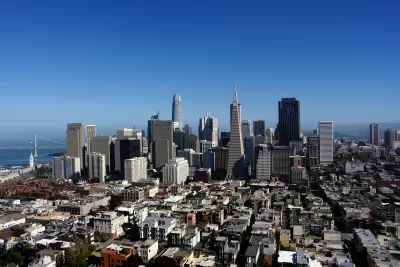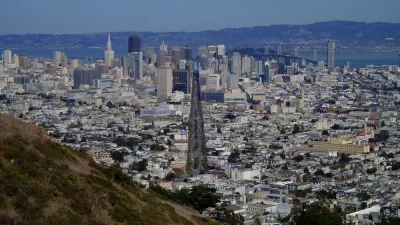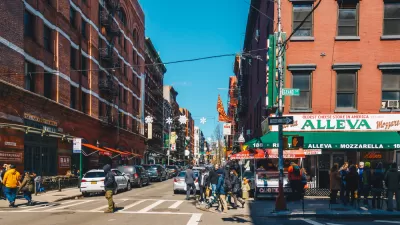A 1971 effort to quantify the city's values and design goals reflects many of the same priorities that planners and residents face today.

In 1971, San Francisco published its Urban Design Plan, a blueprint for preserving the character of the city and addressing growing concerns about building height and density. John King describes the plan, which warned against "unstructured and unabated growth" and the "jarring disharmony" caused by 'unusual' buildings like the Transamerica Pyramid, approved for construction in 1969.
The plan also acknowledged the role of high-rises in the growing city, "a necessary and expressive form for much of the city’s office, apartment, hotel and institutional development," and encourages 'respectful' new development that fits into the city's unique environment.
The plan includes a wealth of photos, sketches, and maps that illustrate the planners' ideas about creating a pleasant urban environment and their design best-practices.
Notably, the plan calls for reducing traffic in residential areas through what we now call traffic calming measures such as narrowed streets, landscaping, and traffic diversion. Planners in 1971 also suggested "close by and visible" parks, pointing to the city's waterfront as an underused recreational space. As King notes, "This was written 20 years before the Embarcadero Freeway was torn down, and 30 years before Crissy Field opened in the Presidio."
The conclusion we can draw from the plan more broadly, writes King, is the idea that the city's fractious population can come to some agreement on what they value in their built environment—and that San Franciscans love their city enough to fight for it.
FULL STORY: Planners tried to define what makes San Francisco special — in 1971. Here’s how their designs fared

Planetizen Federal Action Tracker
A weekly monitor of how Trump’s orders and actions are impacting planners and planning in America.

Congressman Proposes Bill to Rename DC Metro “Trump Train”
The Make Autorail Great Again Act would withhold federal funding to the system until the Washington Metropolitan Area Transit Authority (WMATA), rebrands as the Washington Metropolitan Authority for Greater Access (WMAGA).

The Simple Legislative Tool Transforming Vacant Downtowns
In California, Michigan and Georgia, an easy win is bringing dollars — and delight — back to city centers.

The States Losing Rural Delivery Rooms at an Alarming Pace
In some states, as few as 9% of rural hospitals still deliver babies. As a result, rising pre-term births, no adequate pre-term care and "harrowing" close calls are a growing reality.

The Small South Asian Republic Going all in on EVs
Thanks to one simple policy change less than five years ago, 65% of new cars in this Himalayan country are now electric.

DC Backpedals on Bike Lane Protection, Swaps Barriers for Paint
Citing aesthetic concerns, the city is removing the concrete barriers and flexposts that once separated Arizona Avenue cyclists from motor vehicles.
Urban Design for Planners 1: Software Tools
This six-course series explores essential urban design concepts using open source software and equips planners with the tools they need to participate fully in the urban design process.
Planning for Universal Design
Learn the tools for implementing Universal Design in planning regulations.
Smith Gee Studio
City of Charlotte
City of Camden Redevelopment Agency
City of Astoria
Transportation Research & Education Center (TREC) at Portland State University
US High Speed Rail Association
City of Camden Redevelopment Agency
Municipality of Princeton (NJ)





























